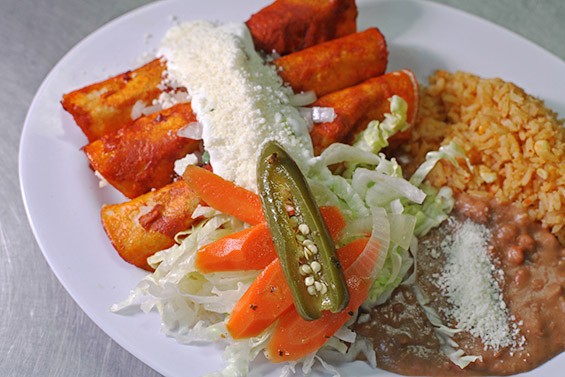
Roland Rubalcava of Rubalcava's Bakery prefaces this month's demonstration with a truth that, now stated, will hopefully keep a couple of people from commenting, “That's not how my mama does it!” on this article.
“Everybody's gonna have a little different idea how to make the best enchiladas,” he says, and ain't that the truth. You can fill them with literally whatever you want, but the most common fillings are shredded chicken, potato, or cheese. The key in making your enchiladas though, regardless of whether your mami does it better, is how you fry them up. Apparently, the whole enchiladas in a casserole dish are a farce, and Roland says it makes restaurants looks lazy. He showed the Weekly how to make the simplest enchiladas, which is the best way to have your key ingredients shine through, and it turned out damn fantastic.
]
Step 1: Prepare Your Chiles
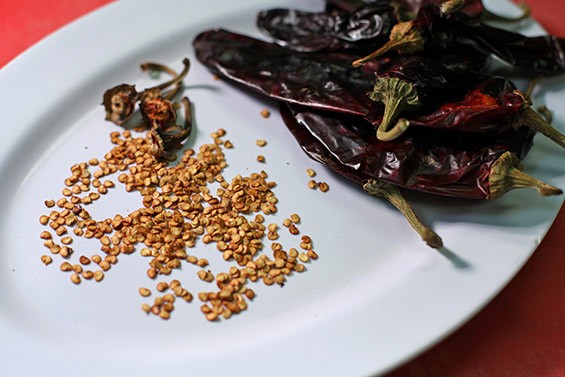
If you remember from last month, Roland is quite a fan of the Chile California for its rich but mild flavor. He uses these to make his enchilada sauce, but you can choose any type. To make a big-ass batch, you would use a whole three-ounce bag of chiles and pull the stem off every one. Then you slice open each chile and scrap all of the little seeds out. Roland says taking all of the seeds out now will save you the work of straining your sauce later.
If your skin is very sensitive, use gloves.
Step 2: Cook Your Sauce
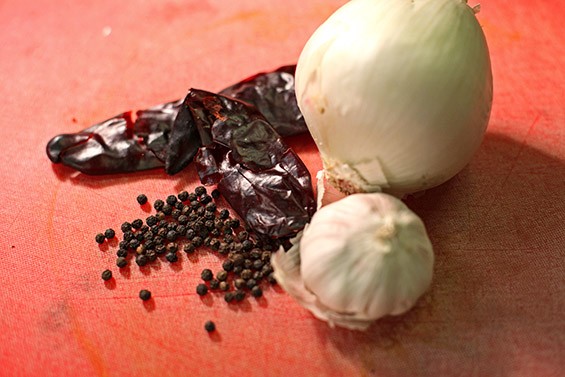
Roland did not specify how to make the enchilada filling because it's a personal preference, but if you decide to boil chicken for the shredded filling, you can use the broth you created as a base for your sauce. If you don't have this homemade stock, then use store-bought chicken stock, or water if you're going the vegetarian route.
Pour enough stock in a big pot so that all of your chiles will be completely submerged when you add them. After the chiles and stock, add 1/3 of a chopped Spanish onion, four cloves of smashed garlic, and a tiny handful of peppercorns. Hard-boil these ingredients for 10 minutes then let it cool down.
After cooling, place the sauce in a blender. Roland says it's important that the sauce is cool enough or else it will pop the top off your blender, and that would be a hot mess. At this point, notice the consistency of your sauce. If there is too much water, the sauce will be too runny, and if it's too thick it will become like mole once you blend it. Pour some water out if need be, and then blend until it is smooth and creamy.
[
Step 3: Tortilla Prep
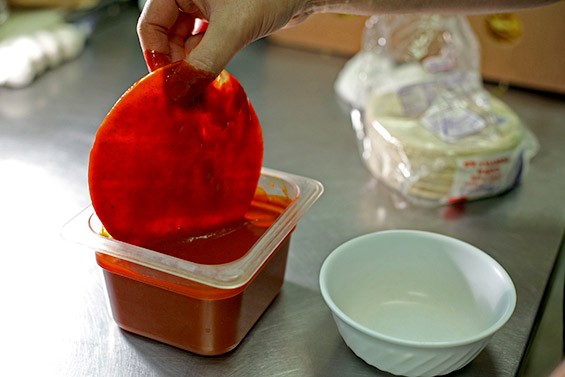
Once the sauce is ready, pour it into a wide container so that you can dip your tortillas. This is the key part that separates gabachiladas from the better ones. Most restaurants will roll their filling in the tortilla, place them in a casserole dish, then pour the sauce over the top. It's much easier, but the taste is just not the same. After all, enchiladas literally mean “rubbed in chile sauce,” Roland comments. The process should actually be done completely backwards and with no oven.
You'll want to take your tortilla (preferably from La Reina, Northgate Market, or Rubalcava's) and completely dip the entire thing in the sauce, letting it get a nice, thick coating. Roland slyly mentions that if you ever want to test if a restaurant did this, simply scrape your fork along the top of your enchilada, and if the sauce comes off the tortilla pretty smoothly, then you know they didn't dip 'em. Although, you'll see soon enough that the difference is obvious at first sight.
Step 4: Cook The Enchiladas
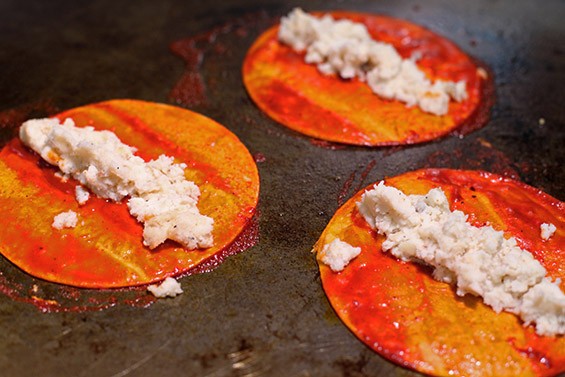
Once you've dipped your tortilla, you'll pour a little bit of lard or oil on a flattop stove or wide pan on medium heat. Then you'll need to act quickly because the enchiladas cook fast. Place your tortilla in the pan; after a moment flip it to the other side, then put a scoop of the filing in the center. You don't want to use too much or it will be hard to roll. For this lesson, Roland used simple mashed potatoes.
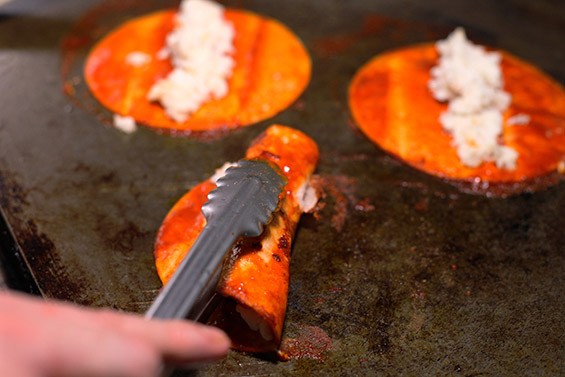
Once your sauce looks to be evaporating up a bit (which should be in about a minute) grab your tongs and, pinching one end of the tortilla, roll the whole thing up on the stove. Make sure it's rolled nice and tight. You can leave it like this for another minute until the filing is cooked through.
Step 5: Plating
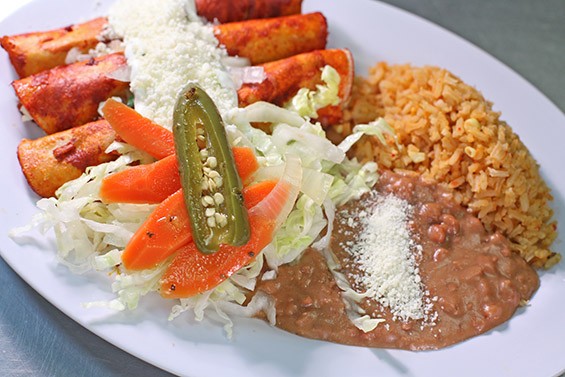
Your enchiladas are all done and now put them on a plate with some Spanish rice and black or refried beans. You can place some cabbage, pickled carrots, and jalapeños on the side. But most importantly, drizzle your enchiladas with sour cream and the shredded cheese of your choice–cotija tastes delicious, especially with the potato filling. If you would like to pour some extra sauce over, just heat it up before hand.
If you made too many, you can microwave them for up to a week. For a less radioactive reuse, save the sauce and filling in Tupperware and whip out your tortillas to make fresh ones later in the week.
Even though Roland clearly puts up some fine enchiladas. he still says his mom's are the best. She doesn't scrimp on any bit of fat, and Roland says you shouldn't either if you really want them right. “If you don't want to eat them right, then don't eat them at all,” he says. “15 minutes of cardio at the gym will take care of that.”
Follow Stick a Fork In It on Twitter @ocweeklyfood or on Facebook! And don't forget to download our free Best Of App here!

